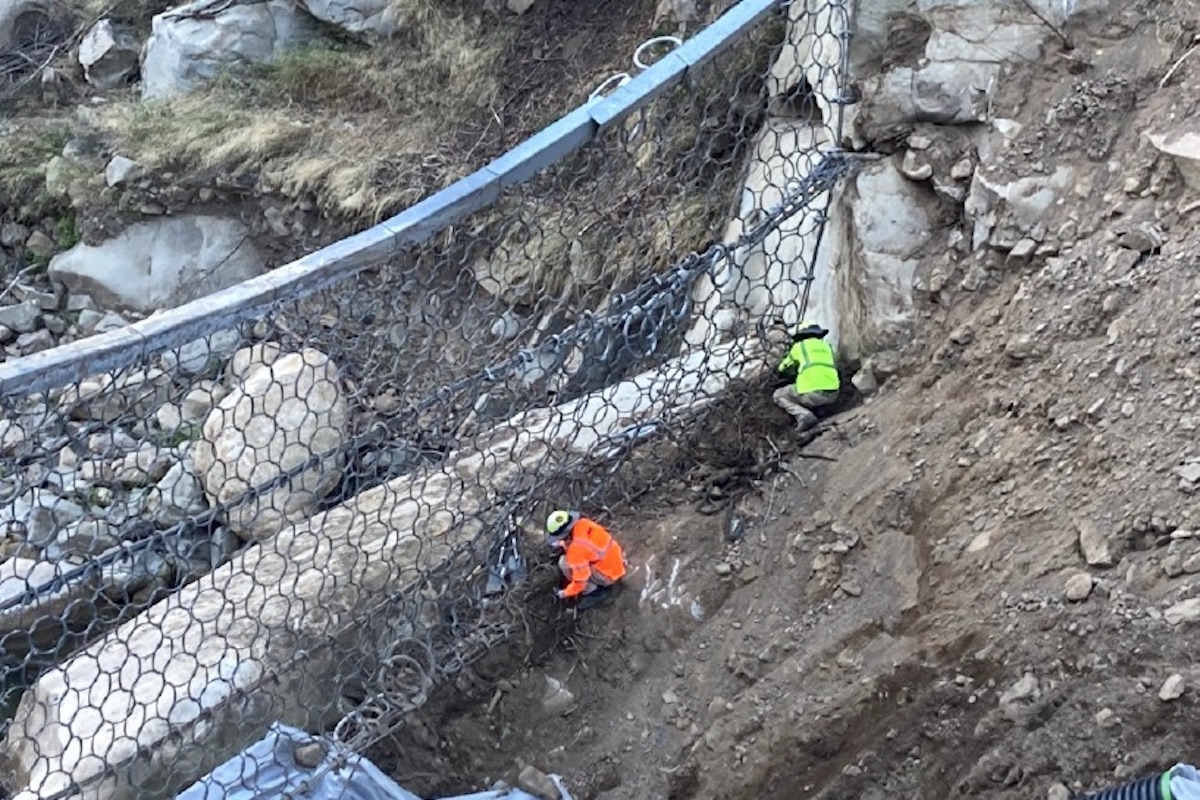Santa Barbara County Soon to Decide Future of Montecito Ring Nets
Blocked San Ysidro Creek Net Reveals What Flowed in January Storms

The question of what’s blocking the steel debris net in upper San Ysidro Creek was answered last week after crews began clearing behind the dam on October 10. The work is a permit requirement, but it will also help Santa Barbara County know what lies in store if it opts to take over from the Project for Resilient Communities, which had six ring nets bolted into three Montecito canyons after the 2018 floods of mud, boulders, and tree trunks killed 23 people.

A 14-ton “walking” excavator — lowered to the creek by helicopter — scooped its way toward the net during the past two weeks, with hand crews working to free the steel net itself of dirt and rock. Their work uncovered a 10-foot section of a 13-inch-diameter tree trunk, along with branches and woody material, and three- to four-foot boulders mixed in with smaller rock and fine soils behind the net.
The material was moved to “the channel above and below where the net is, according to the plan approved by CDFW [California Department of Fish and Wildlife], California Regional Water Quality Control Board, and U.S. Army Corps of Engineers,” said Pat McElroy, executive director for Resilient Communities, which is well aware that they are working in environmentally sensitive creek habitat.
For the past two weeks, biologists at the project site made daily reports documenting such things as the care being taken to keep any diesel out of the creek and dirt, the hand crew’s avoidance of muddying the creek waters, and how tree frogs and tadpoles were moved upstream when found. They kept track of sensitive plant species in the work zone and recorded the wildlife observed nearby, such as flycatchers, Monarch butterflies, and mountain kingsnakes.
Controversy surrounding the debris nets grew after the steel net on upper San Ysidro Creek filled during this January’s rainstorms, damming the creek and reviving environmental concerns about blocking the creek to animal passage, including fish.
Ben Pitterle of Los Padres ForestWatch said it was no surprise that woody material clogged the net; the beaches below the creeks this past winter had been covered with shredded branches and trees.

“What clogged the San Ysidro net was not in any way comparable to the 2018 debris flow,” Pitterle added. “The net created a mess that now impacts the environment and costs tremendously to clean up.”
The road and paths leading to upper San Ysidro Creek were washed out during the storms in January and have yet to be repaired. Heavy supplies were flown in by helicopter, and the crew walked in daily, at a total cost of about $1.5 million.
The conversation currently taking place between McElroy’s group and the county is over how much of an endowment would be necessary to keep maintaining the nets; currently, they are to be removed in December. A permit is in process for retaining them for one or five years.
Scott McGolpin, who heads Public Works for the county, said the debris net procedures would be new to the county. “Our system is that we have debris basins. We load trucks and remove materials,” he said. “If they can get the endowment to where we feel comfortable, perhaps, for operations and maintenance, then we’d take it to the Board of Supervisors” for a decision.
According to Pitterle, the Montecito Planning Commission will be hearing Resilient Communities’ request to extend their permit for one or five years on November 15.

[Click to enlarge] The job site at the upper San Ysidro Creek ring net | Credit: Courtesy Project for Resilient Communities




You must be logged in to post a comment.